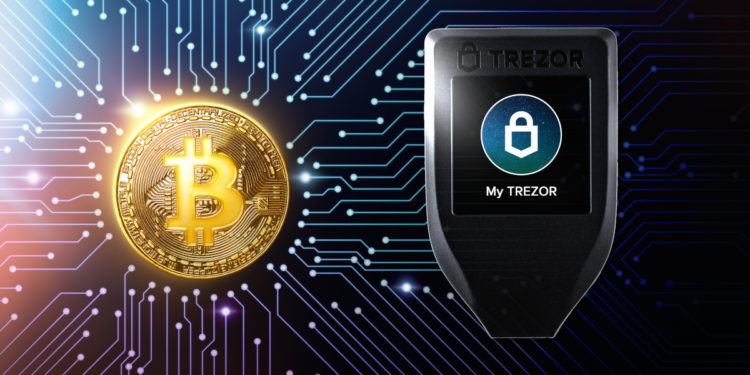The text below is an advertorial article that was not written by Cryptonews.com journalists.
As millions of people discover cryptocurrency for the first time, custody must be front-and-center. While some companies have chosen to sell crypto price-trackers rather than the underlying asset itself, to actually own and use Bitcoin, you need to be able to withdraw it and have proof that you own it, using your private keys.
Digital money must be secure, programmable, and verifiable. Cryptocurrencies like Bitcoin are not designed to exist in trust-based systems with intermediate parties holding your assets. This new global payment infrastructure is trustless and ready for the growing zero-trust movement, where individual custody is the future of money.
In the coming boom, it will be those who take custody of their coins that see the most success from Bitcoin. As cryptocurrencies become more popular, it is essential that investors secure long-term custody to avoid the many mistakes made by those who came before them. Read on to learn how a Trezor Model T hardware wallet makes it easier and more secure to control your own money while retaining full independence.
Full control over your money, forever: Shamir backup
Since cryptocurrencies are easier to keep secure than fiat money, there’s really no need to trust anyone else with storing them for you. When you buy bitcoins as a long-term investment, you should immediately withdraw them to a wallet that only you have the keys to. Never trust an exchange to hold on to your coins.
There are lots of well-made open-source software wallets that can create keys for you but if they’re connected to a network there’s a chance that those unique keys could be copied. To prevent this, use a hardware wallet to create those keys offline, where they never touch a network.
Hardware wallets are the most popular and convenient way to generate keys to your cryptocurrency offline, ever since being created by SatoshiLabs in 2013. If you have your keys secure offline, you maintain exclusive control of your coins and addresses, forever.
If you lose access to your wallet, the common way to restore it was using a recovery seed: a list of 12 or 24 words written down on paper or steel. If that seed was lost, however, there was no way to recover the keys.
Shamir is safer than a standard recovery seed
To make it safe to store recovery seeds without worrying about them over the long term, SatoshiLabs developed Shamir backup. It improves on the previous standard by making many lists of words, known as shares, instead of a single recovery seed. This introduces redundancy: you can lose a share and still access your account. Shamir backup uses cryptography to create the shares in a way that it does not get weaker if a share is stolen.
When you have more than the chosen threshold of shares, they can be combined to generate the keys to your account. Since you can create up to 16 shares, you have the freedom to design a backup strategy that you feel comfortable with, but even a simple three-of-five setup can ensure that you’ll be able to recover your wallet decades down the line.
Where do I keep the shares?
Using a distributed system like Shamir, you’ll want to make sure that the share locations are far away from each other, where they can be kept secret and won’t be found accidentally. You will also want to be able to conveniently access enough shares to restore your wallet if you need to.
There are many ways to do this. For an easy setup where two of three shares are needed, one share could be hidden on your property, another locked securely in your office, and a third kept in custody of a legal professional.
With more shares, such as in a three-of-five setup, you might add a couple more locations such as a secure bank vault or carry on your person. The only essential step is to make sure no one else, especially anyone you might entrust with one of the shares, is able to access them.
A smarter way to plan for inheritance
What should you do to make sure your cryptocurrency is kept safe for your loved ones if you pass away? Planning the inheritance of your Bitcoin holdings is especially important due to cryptocurrencies being custodial assets. If you die and fail to leave clear instructions as to how to access your funds, your family and people close to you will have no way to recover them.
With Shamir backup, crypto inheritance planning is made much easier, without introducing security holes that could be exploited. For example, you could leave a share in safekeeping with the lawyer managing your estate, and another with your next of kin with instructions in your will. This way, there is no ambiguity as to who holds claim to the assets.
There are many other ways to use shares for an inheritance, so you can come up with a plan that fits your circumstances. Make sure not to overcomplicate it, though: five shares are enough for most purposes.
Secure your identity and your assets
Making the move to digital money demands that online security be taken more seriously. Your personal accounts reveal information that can be used for social engineering and other types of fraud. Having a second way to verify access, known as two-factor authentication (2FA) is intended to prevent this, but many types of 2FA commonly used today are not secure enough. Things like an SMS text message sent to your phone number, or a one-time code that your bank confirms are outdated methods and should not be considered secure.
It is almost trivial for an attacker to contact your service provider and transfer your phone number to a new SIM. If your SIM gets swapped, not only could your money be stolen, but your entire identity could be cloned. A one-time code is better, but it relies on a shared secret that both you and the service know. If that secret is leaked by either side, someone would be able to access your account without your knowledge.
Because cryptocurrencies demand more sophisticated security measures, hardware wallets like Trezor are built to be used as FIDO2 and FIDO U2F authenticators. These are two modern security standards that do not rely on a shared secret. Using a Trezor Model T, you can use the most advanced authentication method, FIDO2, to control access to your more sensitive accounts.
Embracing privacy
Fiat money is highly regulated but cryptocurrencies are seen to undermine law enforcement efforts. In the fight against money laundering, regulation has also become an important, albeit controversial, part of Bitcoin and other cryptocurrencies. Unless you are taking money into or out of fiat, which usually requires you to go through a know-your-customer (KYC) verification process, cryptocurrencies can be used legally and privately.
The more decentralized a currency is, the more resistant it becomes to regulation. Bitcoin is highly decentralized so no government can force it to reveal information about its users that is not already public. Trezor wallets ensure that your access to these networks is equally resistant to monitoring so you can protect your right to privacy.
Using a hardware wallet like Trezor, you can safely generate a brand new unique address for every transaction, making it much harder to tell which addresses belong to you, and easily switch connections to route through the Tor network to avoid anyone from spying on you.
As long as you don’t choose to identify yourself as the owner of an address (by signing up to an exchange, for example), you can retain your privacy. For people who are being censored or monitored, access to crypto can be a lifeline. But even for people who feel they have nothing to hide, maintaining discretion in your finances gives you a buffer during uncertain times.

Permanent secure custody through open-source
While there are a large number of hardware wallets now available on the market, many of them are built using Trezor’s original designs. Is that legal? Yes! SatoshiLabs intentionally released Trezor hardware and software under open-source licenses. That means that all code and hardware can be checked, tested, and verified by security researchers across the world.
Being open-source means there’s nothing to hide: no backdoors, no undisclosed vulnerabilities, no way for anyone but you to access your funds. It also means that no matter what happens in the next few decades, you will always be able to recover your wallet, even if SatoshiLabs went out of business – all documentation on how to create the device using easy-to-source parts and the standards needed to restore your coins is publicly available to everyone.
Custody comes first
The Bitcoin network is built around custody, which can be intimidating coming from traditional finance, which is built on trust. A zero-trust model of security, which hardware wallets enable, makes it easy to work with custodial assets and let individuals secure their own funds and identities at all times.
Hardware wallets like Trezor are the only devices you need to take control of cryptocurrencies. With so much versatility, custody can be tailored to fit the individual and scale to organizations of any size, keeping all keys offline and isolated using smart, convenient security measures like multisignature and Shamir backup.
Click here to visit the Trezor store.
Credit: Source link






















